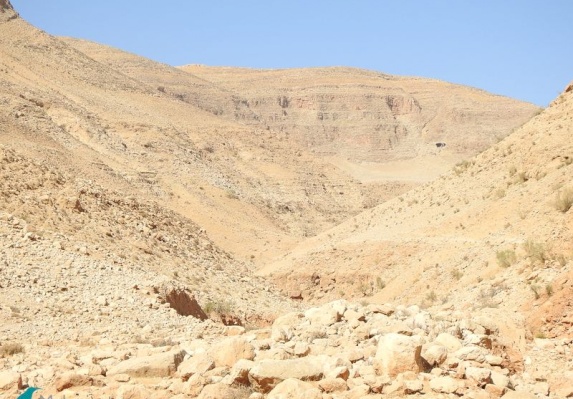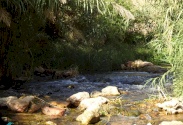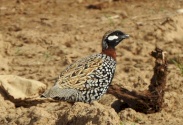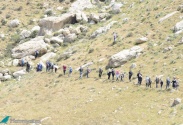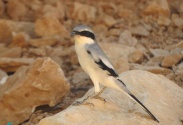Ein-Samiya – Al-Auja Reserve Trail
The trail goes through the eastern slopes from Ain Samiya to Ein al-Auja.
A tour through the trail:
The trail starts from Ein Samiya, east of the village of Kafr Malik, and the visitor walks through the valley in a dirt road and lands where rocks are exposed, as visitors get feeling to be in an area of plain lands, and foothills where short trees are distributed, almost empty of trees. The visitor will pass through two Christ’s thorn tress that obtain large numbers of bird nests that pass through an important area for them during their migration through the lands.
In the area of Saqal Ein Samia, which is full of thyme seedlings, and in the valley there are ruins of a byzantine church where the altar is in its eastern part, and there are remains of a bath and water well near it, this indicates the acquisition of the area of the necessities of life through different ages, especially the classical ones, the visitor goes east towards a deep border, as the height of the surrounding rocky edges increases as the descent of the trail around the area increases.
This rocky edge is surrounded by beautiful vegetation, including rare ones, through wet cracks. The entire area between the two sides of the groove, and here it is possible to get a break, and watch the types of wild plants such as the rare Safa iris and wild eggplant.
The road starts with a change towards a semi-desert climate, and the visitor continues to walk after traveling about 14 km to reach Ras al-Ain, or spring of al-Auja. Until the eighties, it was called the al-Auja River. The outskirts of Al-Auja village, here it is possible to supply and have a break, to obtain a geographical and natural knowledge of the trail and to see the components of the park and its facilities. (The spring is made of limestone, as the stalk grows and the basin expands for tourism and recreation).
Visitors continue east until Haidar well, a historical landmark that represents a primitive method of collecting water before it flows into the Jordan River, and here ends one of Jericho's historical trails as it is the oldest city in the world
Biodiversity
There is a distinctive vegetation cover the area, including wild carnations, valley laurel, Safa iris, wild eggplant, Christ's thorn trees, and acacias. In addition, the visitor can see fish, dragonflies, snails, and many mammals, such as: the Palestinian mountain gazelles, Rock Hyrax, Striped hyena, and the visitor can see many types of birds and hear their beautiful melody, and the most important of these birds are: black kite, black partridge, bee-eater, starling, Gray shrike, and Namaqua Dove

All rights reserved by www.mahmiyat.ps ©

